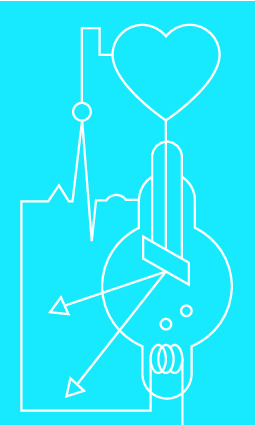|
|
|
| Module code: BMT.E2405 |
|
|
3V+1U (4 hours per week) |
|
5 |
| Semester: 4 |
| Mandatory course: yes |
Language of instruction:
German |
Assessment:
Written exam
[updated 08.01.2020]
|
BMT.E2405 (P211-0025) Biomedical Engineering, Bachelor, ASPO 01.10.2018
, semester 4, mandatory course
BMT3405.SUS Biomedical Engineering, Bachelor, SO 01.10.2025
, semester 4, mandatory course
E2405 (P211-0025) Electrical Engineering and Information Technology, Bachelor, ASPO 01.10.2018
, semester 4, mandatory course, technical
|
60 class hours (= 45 clock hours) over a 15-week period.
The total student study time is 150 hours (equivalent to 5 ECTS credits).
There are therefore 105 hours available for class preparation and follow-up work and exam preparation.
|
Recommended prerequisites (modules):
None.
|
Recommended as prerequisite for:
|
Module coordinator:
Prof. Dr. Martin Buchholz |
Lecturer: Prof. Dr. Martin Buchholz
[updated 10.09.2018]
|
Learning outcomes:
After successfully completing this course, students will be able to grasp the abstract, system-theoretical relationships necessary for understanding how signals are transmitted in telecommunications systems. - They will be able to classify signals and systems and analyze properties such as linearity, time invariance, causality or stability. - They will be familiar with the procedure of folding for calculating systems in the time domain and be able to apply it to various examples. - Students will be able to explain the relationship between impulse response and frequency response. - They will be able to apply the Fourier transform to analyze signal processing systems in the frequency domain. - Students will be able to describe the relationships between Fourier and Laplace transforms and apply these transforms to IT systems. - They will be able to use the Laplace transform to calculate control systems in information technology (synchronization loops, amplifier control, adaptive filters). - Students will be able to calculate and outline the influences on signals and systems that arise when scanning to digitize signals. - They will understand the necessity of describing signals and systems with the complex baseband representation. - Students will have acquired the basics necessary for analog and digital signal processing, image processing, spectral analysis and communication technology.
[updated 08.01.2020]
|
Module content:
Our focus will be on system theoretical knowledge for the field of information technology 1. Introduction, signals and systems, terminology and definitions 2. Signal classification 3. Describing LTI systems in the time domain 4. Describing LTI systems in the frequency domain 5. Describing LTI systems using the Laplace transform 6. Discrete-time signals and systems 7. Representing complex signals
[updated 08.01.2020]
|
Teaching methods/Media:
Lecture notes, projector, MATLAB-SIMULINK, exercise sheets
[updated 08.01.2020]
|
Recommended or required reading:
Frey, Thomas; Bossert, Martin: Signal- und Systemtheorie, Vieweg + Teubner, (latest edition) Girod, Bernd; Rabenstein, Rudolf; Stenger, Alexander: Einführung in die Systemtheorie, Teubner, (latest edition) Lüke, Hans-Dieter; Ohm, Jens-Rainer: Signalübertragung - Grundlagen der digitalen und analogen Nachrichtenübertragungssysteme, Springer, (latest edition) Oppenheim, Alan V.; Willsky, Alan S.: Signale und Systeme: Lehrbuch, Wiley-VCH, 1991, 2. Aufl., ISBN 978-3527284337 Scheithauer, Rainer: Signale und Systeme, Teubner, 2005, 2. Aufl. Werner, Martin: Signale und Systeme: Lehr- und Arbeitsbuch mit MATLAB-ßbungen, Vieweg, 2005, 2. Aufl.
[updated 08.01.2020]
|


